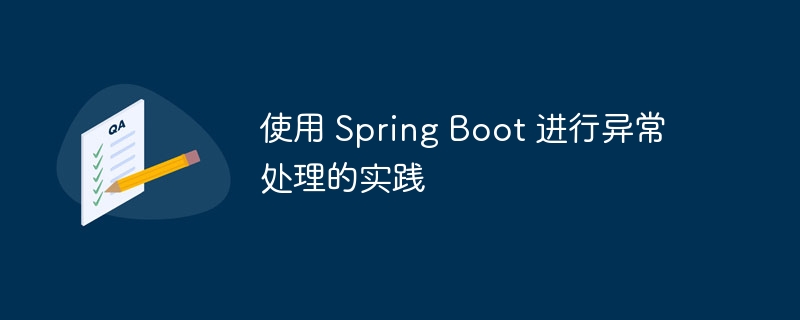在 spring boot 中,异常处理最佳实践包括:定义明确的异常层次结构,以表示不同类型的错误;使用 try-catch 块明确处理异常;提供友好的错误消息,避免技术术语;使用日志记录框架记录异常,便于故障排除。

在 Spring Boot 中,有效处理异常对于构建健壮且用户友好的应用程序至关重要。本文将介绍处理异常的最佳实践,并通过一个实战案例来说明如何实施这些实践。
假设我们有一个 Spring Boot 应用程序,它提供了一个 API 来管理用户。我们将实现一个错误处理机制,以处理创建用户时可能发生的异常。
下列代码显示了处理创建用户操作的 UserService:

Delphi 7应用编程150例 CHM全书内容下载,全书主要通过150个实例,全面、深入地介绍了用Delphi 7开发应用程序的常用方法和技巧,主要讲解了用Delphi 7进行界面效果处理、图像处理、图形与多媒体开发、系统功能控制、文件处理、网络与数据库开发,以及组件应用等内容。这些实例简单实用、典型性强、功能突出,很多实例使用的技术稍加扩展可以解决同类问题。使用本书最好的方法是通过学习掌握实例中的技术或技巧,然后使用这些技术尝试实现更复杂的功能并应用到更多方面。本书主要针对具有一定Delphi基础知识
 0
0

@Service
public class UserService {
public User createUser(String username, String password) {
try {
// 创建用户...
} catch (UsernameAlreadyExistsException e) {
// 处理用于名已存在的异常...
throw new BadRequestException("Username already exists");
} catch (Exception e) {
// 处理其他异常...
throw new InternalServerErrorException("An internal server error occurred");
}
}
}在上面的示例中:
UsernameAlreadyExistsException,它是一个自定义异常,表示用户已存在。InternalServerErrorException,该异常指示发生了内部服务器错误。为了处理这些异常,我们还在 Spring Boot 配置中定义了以下异常处理程序:
@SpringBootApplication
public class Application {
public static void main(String[] args) {
SpringApplication.run(Application.class, args);
}
@ExceptionHandler(BadRequestException.class)
@ResponseStatus(HttpStatus.BAD_REQUEST)
public ResponseEntity<String> handleBadRequestException(BadRequestException e) {
return ResponseEntity.badRequest().body(e.getMessage());
}
@ExceptionHandler(InternalServerErrorException.class)
@ResponseStatus(HttpStatus.INTERNAL_SERVER_ERROR)
public ResponseEntity<String> handleInternalServerErrorException(InternalServerErrorException e) {
return ResponseEntity.internalServerError().body(e.getMessage());
}
}通过这些异常处理程序,Spring Boot 将在抛出 BadRequestException 或 InternalServerErrorException 时自动转换响应状态代码并返回错误消息。
以上就是使用 Spring Boot 进行异常处理的实践的详细内容,更多请关注php中文网其它相关文章!

每个人都需要一台速度更快、更稳定的 PC。随着时间的推移,垃圾文件、旧注册表数据和不必要的后台进程会占用资源并降低性能。幸运的是,许多工具可以让 Windows 保持平稳运行。

Copyright 2014-2025 https://www.php.cn/ All Rights Reserved | php.cn | 湘ICP备2023035733号